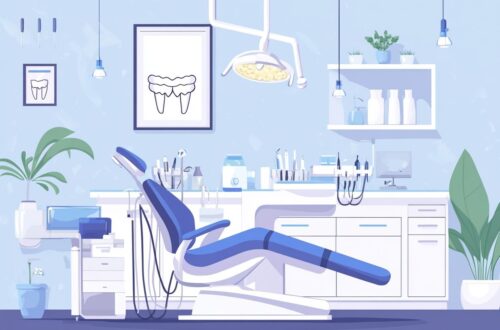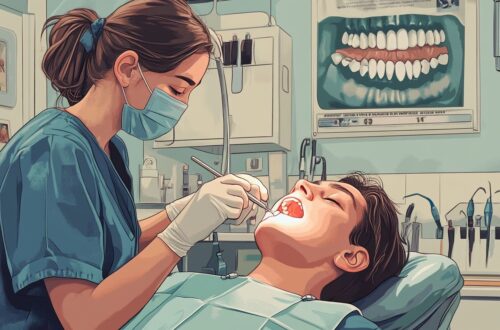For breastfeeding mothers, the safety of using teeth whitening products like whitening strips to achieve a brighter smile is an important consideration.
While these popular teeth-whitening products can yield noticeable results, it is essential to evaluate both the potential risks, such as enamel erosion and background risk of oral health issues, and the effective alternatives that may be safer for both the mother and the infant.
This article examines the safety of whitening strips during breastfeeding, presents natural whitening alternatives, and underscores the importance of consulting a healthcare professional and considering a risk assessment prior to making any decisions.
Please continue reading to make an informed choice regarding dental care.
Key Takeaways:
What are Whitening Strips?
Whitening strips are a widely used cosmetic dental product designed for at-home teeth whitening. These strips utilize active ingredients such as hydrogen peroxide, carbamide peroxide, and sodium fluoride to effectively lighten tooth enamel and enhance smiles. They are frequently preferred for their ease of use and accessibility, providing a convenient alternative to professional whitening treatments while adhering to the necessary safety standards for oral health and dental care.
The formulation of whitening strips typically comprises a thin layer of whitening gel that adheres securely to the teeth, allowing for consistent application of the active ingredients. This method not only targets surface stains but also penetrates deeper to address discoloration, ensuring noticeable results over time.
While professional whitening treatments may yield quicker and more dramatic outcomes, at-home strips offer a gradual and gentler approach that integrates seamlessly into daily routines. Users value their versatility, as they can wear the strips while engaging in normal activities, all while contributing positively to overall dental hygiene by fostering confidence and encouraging regular oral care.
Safety of Using Whitening Strips while Breastfeeding
The safety of using whitening strips during breastfeeding is a pertinent concern for new mothers, necessitating a careful evaluation of the potential risks associated with the active ingredients typically present in these products, such as hydrogen peroxide and sodium fluoride.
Many healthcare professionals advise exercising caution and stress the importance of comprehending how these cosmetic procedures may impact both maternal health and the well-being of the infant during the lactation period, as noted in the MotherToBaby lactation database.
Potential Risks and Concerns
The use of whitening strips may present several potential risks and concerns, particularly in relation to tooth sensitivity, gum irritation, and dental cavities. These are common side effects associated with the active ingredients, such as hydrogen peroxide. Such issues may arise from improper application or overuse, highlighting the necessity of adhering to health standards and guidelines to mitigate risks to one’s dental health.
When individuals fail to comply with the recommended application times or choose higher concentrations than advised, they may experience increased discomfort.
Prolonged exposure to these whitening agents can also result in enamel thinning, which heightens the susceptibility to cavities and other dental issues. Furthermore, gum irritation may occur due to direct contact with the strips, especially if they are not positioned correctly.
It is imperative for users to consult a dental professional prior to initiating any whitening regimen to ensure the selection of a safe product, understand the cosmetic world of whitening essentials, and to fully comprehend the appropriate usage techniques.
Alternatives to Whitening Strips
There are several effective alternatives to whitening strips for individuals seeking to enhance their smile, including whitening toothpastes, blue light therapy, and natural methods that emphasize oral hygiene and dental care.
These alternatives offer a safer approach for those who are concerned about the chemical composition of conventional whitening products, specifically catering to individuals who may require gentler options for teeth whitening.
Natural and Safe Teeth Whitening Methods
Natural teeth whitening methods have gained significant popularity as safe and effective alternatives to conventional whitening strips. Options such as baking soda, activated charcoal, and various home remedies have become common practices among individuals who prioritize oral health. These methods typically present fewer risks, such as using products like Crest or SNOW, and comply with safety standards that promote dental well-being, allowing individuals to achieve a brighter smile without the use of harsh chemicals.
An increasing number of individuals are turning to these natural alternatives due to their ease of use, antimicrobial properties, and accessibility. For instance, baking soda is recognized for its mild abrasive properties, which can effectively remove surface stains when utilized in moderation. Activated charcoal, another popular method, functions by absorbing toxins and impurities in the mouth, thereby improving oral hygiene while also contributing to a whiter appearance.
The appeal of these natural options stems not only from their effectiveness but also from the absence of side effects commonly associated with chemical whiteners, such as tooth sensitivity and gum irritation. By opting for natural products, individuals not only enhance their smiles but also support their overall dental care routine, ensuring a safer and more holistic approach to achieving a luminous grin.
Consulting with a Doctor before Using Whitening Strips
Before utilizing whitening strips, it is crucial to consult with a healthcare provider, particularly for specific populations such as pregnant women, breastfeeding mothers, and those considering pregnancy guidelines, to ensure that their use adheres to safety standards and addresses individual health considerations.
A thorough risk assessment can assist in identifying any potential concerns associated with dental procedures and the effects of active ingredients, thereby facilitating well-considered choices regarding teeth whitening.
Important Factors to Consider
When considering the use of whitening strips, it is imperative to evaluate several important factors, including the active ingredients, their effects on oral hygiene, and overall dental health. Understanding the safety standards and health standards established for these products can assist users in making informed decisions and encourage consultation with healthcare professionals for personalized guidance.
Particularly, examining common active ingredients such as hydrogen peroxide or carbamide peroxide can enable individuals to assess the strength and the potential benefits or risks associated with their selected products.
Additionally, it is essential to be cognizant of possible side effects, which may range from tooth sensitivity to gum irritation, underscoring the importance of adhering strictly to usage instructions.
Maintaining a consistent oral hygiene routine, including regular brushing with a soft brush and flossing, not only enhances the effectiveness of whitening treatments but also promotes overall dental health.
By carefully considering these factors, users can ensure a safer and more gratifying experience while pursuing a brighter smile.
Weighing the Risks and Benefits
Weighing the risks and benefits of using whitening strips is essential for individuals seeking to enhance their smiles, as this assessment allows for an evaluation of potential side effects in relation to the desired outcomes. Consulting with healthcare providers can yield invaluable insights into the effectiveness of these products, as well as possible alternatives like professional whitening treatments that may align more closely with individual dental health and safety standards.
Healthcare professionals often recommend a comprehensive evaluation of one’s dental history and any pre-existing conditions that might affect the decision to utilize these over-the-counter whitening options. They may suggest alternatives such as professional whitening treatments, which typically offer more immediate and predictable results while minimizing the risk of gum irritation, enamel damage, and other oral infections.
It is crucial for individuals to adhere to the manufacturer’s guidelines when using whitening strips, as improper application can exacerbate sensitivity. Ultimately, making an informed choice requires not only an understanding of the advantages and disadvantages of whitening strips and other whitening products but also a thorough exploration of all available options to achieve a radiant smile.
Frequently Asked Questions
Can I use whitening strips while breastfeeding?
It is generally not recommended to use whitening strips while breastfeeding.
What are the risks of using whitening strips while breastfeeding?
There is a potential risk of the chemicals from the whitening strips being transferred to the baby through breast milk.
Are there any safe alternatives for teeth whitening while breastfeeding?
Yes, there are many natural and safe alternatives such as baking soda, activated charcoal, oil pulling, and whitening toothpastes that contain common ingredients like Glycerin and sodium hydroxide.
Can I use whitening strips while breastfeeding if I rinse my mouth thoroughly afterwards, taking into account the American Dental Association’s guidelines?
While rinsing your mouth may reduce the amount of chemicals in your mouth, it does not completely eliminate the background risk of them being transferred to your baby through breast milk. Oral health is important, but it is crucial to be aware of potential birth defects linked to certain products.
How long should I wait after breastfeeding to use whitening strips or other whitening products?
It is recommended to wait until you are no longer breastfeeding before using whitening strips or engaging in other cosmetic procedures to ensure the safety of your baby and adhere to pregnancy guidelines.
Are there any breastfeeding-friendly whitening strips or whitening toothpastes available?
There are some whitening strips and whitening toothpastes that claim to be safe for breastfeeding mothers. However, professional whitening advice and consultation with your doctor or health providers are recommended to assess the health and safety of these products.




